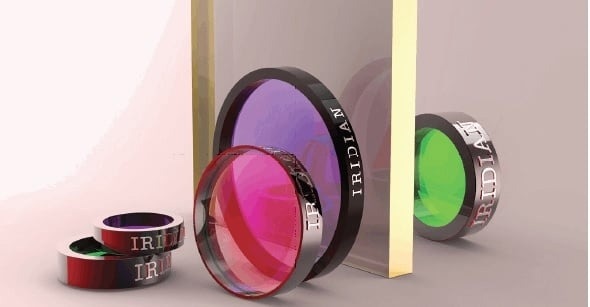Raman spectroscopy, compatible with molecular and material samples, is one of the most popular quantitative and qualitative spectroscopic techniques. A sample has a distinct Raman “fingerprint” that can be used for identification when the frequencies of the oscillations of the chemical bonds are precisely measured in a Raman experiment.

Image Credit: Iridian Spectral Technologies
The exact frequency at which a bond vibrates is strongly influenced by the local chemical environment around an atom, making Raman spectroscopy an incredibly sensitive technique for determining the functional groups present in a sample.
Raman spectroscopy is frequently used in materials analysis, biomedical imaging, and pharmaceutical development and quality control.1
Raman Spectrometers
Balancing the Raman effect’s inherent weakness with competing fluorescent background processes is one of the main difficulties in Raman spectroscopy. The excitation wavelength determines the intensity of a Raman signal, 1/λ4—where λ is the excitation wavelength used. The probability of observing fluorescence from a sample increases as the excitation wavelength gets shorter.
Filters play a crucial role in Raman spectroscopy spectrometer design. In Raman instruments, various filter types are used to eliminate undesirable scattering signals, enhance the signal-to-noise in measurements, and suppress artifacts.
In Raman spectroscopy, common filter types include laser line, notch, long, and short wave pass filters.
Laser Line Filters
For sufficient signal levels, Raman spectroscopy depends on powerful laser sources. Since the Raman scattered light does not depend on a particular wavelength (unlike fluorescence excitation), only a limited range of excitation wavelengths must reach the test sample.
In Raman spectroscopy, a laser line filter is chosen with a central wavelength that matches the excitation source. This filter will eliminate any unwelcome “off-center wavelength” side band contributions from the laser.
Notch Filters
In Raman spectroscopy, notch filters, also known as band-stop filters, are used in the detection path to block or attenuate a specific wavelength region that corresponds to the laser line wavelength. The Raman scattered signal will correspond to all other wavelengths outside of the blocked region, so these should all be transmitted.
Long and Short Wave Pass Filters
In Raman spectroscopy, long pass edge filters are used to transmit light from the sample that has been Raman scattered at lower energies or longer wavelengths while suppressing unwanted Rayleigh scattered signal laser light. To accomplish this, only wavelengths above a specific blocking wavelength are transmitted.
An ultra-steep cut-on may be preferred for such filters, and a well-made filter may facilitate better recovery of the crucial fingerprint region in Raman spectroscopy. The best spectral region for sample identification is in this range.
Short-wave pass filters are the opposite of long-pass edge filters. Nonetheless, they are utilized when it is preferable to recover the anti-Stokes scattering instead of the longer wavelength Stokes scattering.
An ideal short-pass edge filter features identical characteristics to the long pass. However, a short pass will block all frequencies above the given cut-on wavelength. Both filters need high ODs in the blocked regions to provide good contrast.
References
- Jones, R. R., Hooper, D. C., Zhang, L., Wolverson, D., & Valev, V. K. (2019). Raman Techniques: Fundamentals and Frontiers. Nanoscale Research Lett, 14, p. 231. https://doi.org/10.1186/s11671-019-3039-2

This information has been sourced, reviewed, and adapted from materials provided by Iridian Spectral Technologies.
For more information on this source, please visit Iridian Spectral Technologies.